Organizations need to consider all of these in their efforts to create a mentally healthy workplace.
Psychological Support – A workplace where co-workers and supervisors are supportive of employees’ psychological and mental health concerns and respond appropriately as needed. For some organizations, the most important aspect of psychological support may be to protect against traumatic stressors at work.
| Source: https://youtu.be/tIAIwSx19SU
Organizational Culture – A workplace characterized by trust, honesty and fairness. Organizational culture, in general, are basic assumptions held by a particular group. These assumptions are a mix of values, beliefs, meanings and expectations that group members hold in common and that they use as cues to what is considered acceptable behaviour and how to solve problems.
| Source: https://youtu.be/NJia_p0c3BY
Clear Leadership & Expectations – A workplace where there is effective leadership and support that helps employees know what they need to do, how their work contributes to the organization and whether there are impending changes.
| Source: https://youtu.be/MH3gWoGrfyA
Civility & Respect – A workplace where employees are respectful and considerate in their interactions with one another, as well as with customers, clients and the public. Civility and respect are based on showing esteem, care and consideration for others, and acknowledging their dignity.
| Source: https://youtu.be/dMIcbVOWvQ8
Psychological Competencies & Requirements (or psychological demands) – A workplace where there is a good fit between employees’ interpersonal and emotional competencies, their job skills and the position they hold. A good fit means that the employees possess the technical skills and knowledge for a particular position as well as the psychological skills and emotional intelligence (self-awareness, impulse control, persistence, self-motivation, empathy and social deftness) to do the job. Note that a subjective job fit (when employees feel they fit their job) can be more important than an objective job fit (when the employee is assessed and matched to the job).
| Source: https://youtu.be/i5xQ0hdaOVg
Growth & Development – A workplace where employees receive encouragement and support in the development of their interpersonal, emotional and job skills. This type of workplace provides a range of internal and external opportunities for employees to build their repertoire of competencies. It helps employees with their current jobs as well as prepares them for possible future positions.
| Source: https://youtu.be/1-ayikvxCXE
Recognition & Reward – A workplace where there is appropriate acknowledgement and appreciation of employees’ efforts in a fair and timely manner. This element includes appropriate and regular financial compensation as well as employee or team celebrations, recognition of years served, demonstrating/acting according to organizational values, and/or milestones reached.
| Source: https://youtu.be/IoL8e44qd4A
Involvement & Influence – A workplace where employees are included in discussions about how their work is done and how important decisions are made. Opportunities for involvement can relate to an employee’s specific job, the activities of a team or department, or issues involving the organization as a whole.
| Source: https://youtu.be/IoL8e44qd4A
Workload Management – A workplace where tasks and responsibilities can be accomplished successfully within the time available. A large workload is often described by employees as being the biggest workplace stressor (i.e., having too much to do and not enough time to do it). It is not only the amount of work that makes a difference but also the extent to which employees have the resources (time, equipment, support) to do the work well.
| Source: https://youtu.be/eaNaYw9RjFE
Engagement – Employees enjoy and feel connected to their work and where they feel motivated to do their job well. Employee engagement can be physical (energy exerted), emotional (positive job outlook and passionate about their work) or cognitive (devote more attention to their work and be absorbed in their job). Engaged employees feel connected to their work because they can relate to, and are committed to, the overall success and mission of their company. Engagement is similar to, but should not be mistaken for job satisfaction, job involvement, organizational commitment, psychological empowerment, and intrinsic motivation.
| Source: https://youtu.be/5tAHnv8Iz4o
Balance – Present in a workplace where there is recognition of the need for balance between the demands of work, family and personal life. This factor reflects the fact that everyone has multiple roles employees, parents, partners, etc. These multiple roles can be enriching and allow for fulfillment of individual strengths and responsibilities, but conflicting responsibilities can lead to role conflict or overload. Greater workplace flexibility enables employees to minimize work-life conflict by allowing them to accomplish the tasks necessary in their daily lives. Work-life balance is a state of well-being that allows a person to effectively manage multiple responsibilities at work, at home and in their community. Work-life balance is different for everyone and it supports physical, emotional, family and community health and does so without grief, stress or negative impact.
| Source: https://youtu.be/n_8b2-Dnctw
Psychological Protection – A workplace where tasks and responsibilities can be accomplished successfully within the time available. A large workload is often described by employees as being the biggest workplace stressor (i.e., having too much to do and not enough time to do it). It is not only the amount of work that makes a difference but also the extent to which employees have the resources (time, equipment, support) to do the work well.
| Source: https://youtu.be/Y8NQcUYkcWw
Protection of Physical Safety – This factor includes the work environment itself. Steps can be taken by management to protect the physical safety of employees. Examples include policies, training, appropriate response to incidents or situations identified as risks, and a demonstrated concern for employees’ physical safety.
| Source: https://youtu.be/LStU2G4JBus
| Source: https://www.ccohs.ca/oshanswers/psychosocial/mentalhealth_risk.html
